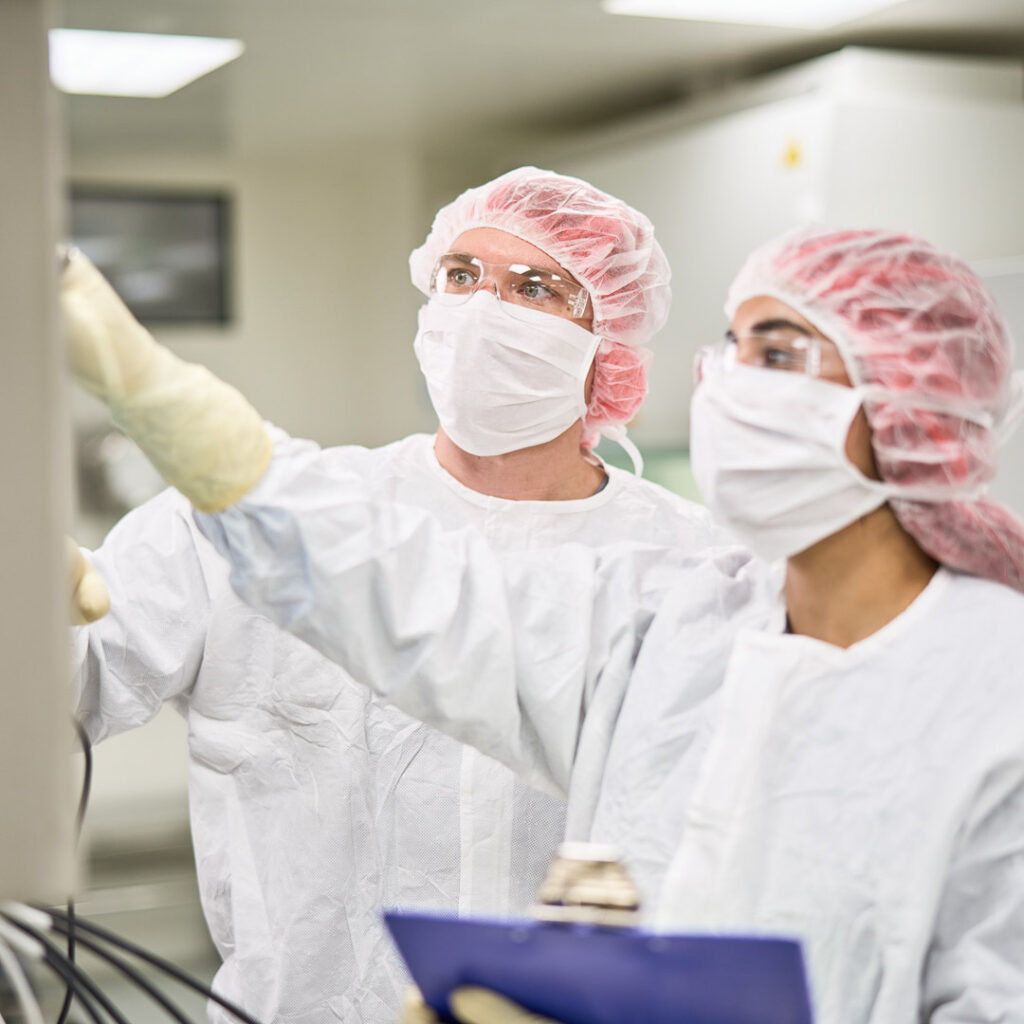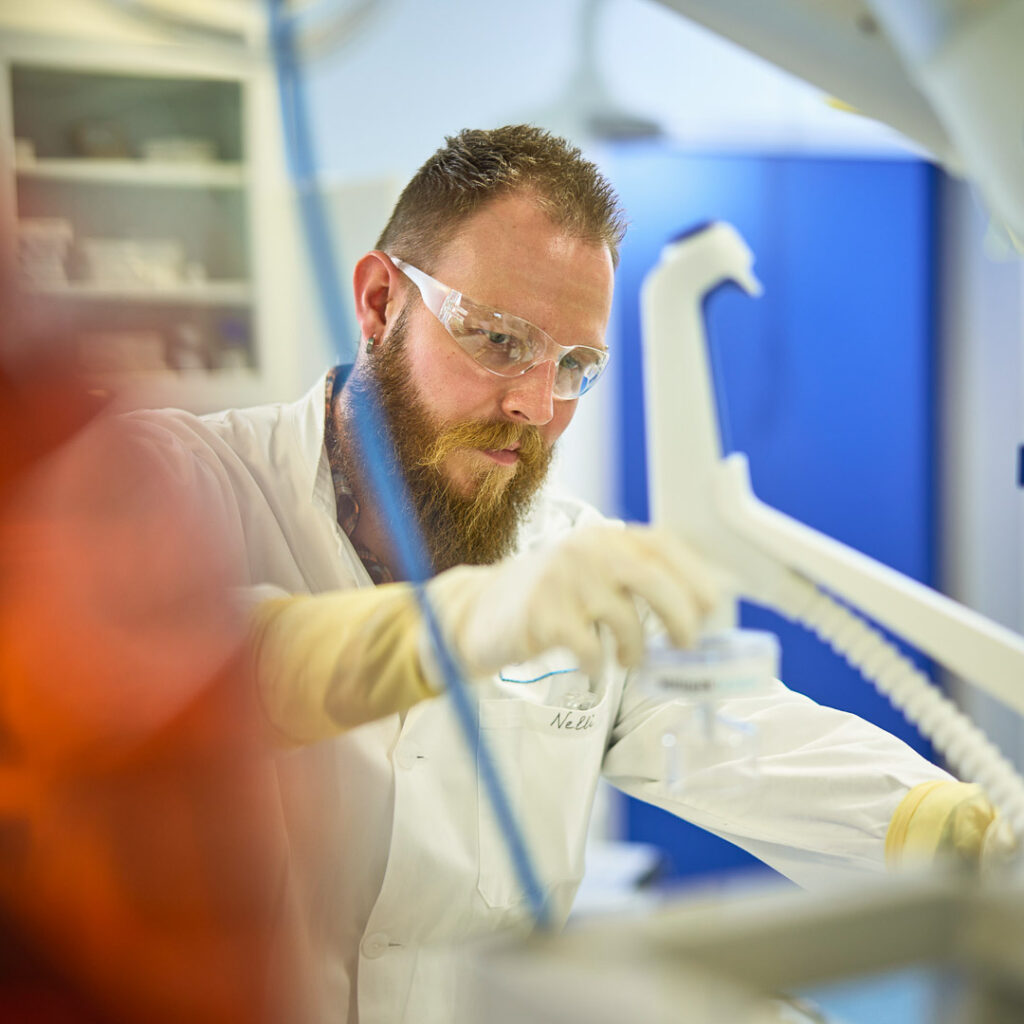Science
The driving force behind our work
Explore our gene therapy journey and discover how science fuels our mission to inspire hope and transform lives.

The genesis of FinVector
The story of FinVector finds its origins in one of the world’s first gene therapy companies.
The tale of FinVector started in 1993 when Medigene Oy was founded in Finland with a mission to explore genetic therapies and revolutionize medicine. Meanwhile, across the sea in the UK, Ark Therapeutics Ltd emerged in 1997 from the collective efforts of three scientists, Professor John Martin, Mr Stephen Barker and Professor Seppo Ylä-Herttuala, focusing on gene-based treatments.
At the change of the millennium, in the year 2000, Medigene Oy underwent a transformation into Oy Quattrogene Ltd, expanding its global presence. A year after the name change, the paths of these two companies converged. Ark Therapeutics Ltd acquired Oy Quattrogene Ltd and renamed it Ark Therapeutics Oy.
Ark Therapeutics Group PLC went public on the London Stock Exchange in 2004. The company dedicated itself to the research and development of viral-based gene therapy products, focusing first on a type of brain cancer of which development encountered regulatory challenges that necessitated further research.
In 2013, merely a decade after going public, Ark Therapeutics Group PLC sold its operating subsidiaries to WKD Holding Oy, leading to the birth of FinVector Vision Therapies Ltd (UK) and FinVector Vision Therapies Oy (Finland).
The company becomes part of the Ferring umbrella
A year after the WKD Holding deal, Trizell Holding SA, ultimately owned by the Frederik Paulsen Foundation, acquired 100% of the share capital of FinVector Vision Therapies Ltd. followed by a name change to Trizell Ltd in the UK in 2016. However, in Finland, the company continued to operate under the name FinVector Vision Therapies Oy.
Two years later, the company streamlined its name from FinVector Vision Therapies Oy to FinVector Oy. Around the same time, FinVector’s R&D function was separated as a company of its own, which led to the establishment of Kuopio Center for Gene and Cell Therapy Oy, currently known as Ferring Ventures Oy.
In 2019, a group restructure took place leading Trizell Ltd to dispose of its 100% shareholding of FinVector Oy to its parent company Ferring Ventures S.A. (previously known as Trizell Holding S.A.). As of today, the company continues to operate on the same path.
Over the years, the company and its dedicated team have pioneered the development and regulatory pathway for gene medicine, establishing adenoviral gene therapy as a viable therapeutic platform. The founders’ visionary investment decisions and commitment to developing state-of-the-art facilities in Kuopio have been pivotal to FinVector’s success.

Gene therapy unveiled
Human gene therapy represents a transformative approach, aiming to modify gene expression and manipulate the biological properties of living cells for therapeutic purposes.
Gene therapy is a groundbreaking technique designed to alter a person’s genetic makeup to treat or even cure diseases. This innovative field operates through various mechanisms:
- Gene replacement: substituting a faulty disease-causing gene with a healthy, functional copy.
- Gene silencing: inactivating a malfunctioning disease-causing gene.
- Gene augmentation: introducing new or modified genes into the body to combat diseases effectively.
Gene therapy is a promising frontier in medicine, with ongoing research focusing on its application in treating a wide range of conditions, including cancer, genetic disorders, and infectious diseases.

How Gene Therapy works
Gene therapy involves the direct insertion of new genes into cells using a specialised carrier known as a “vector.” These vectors are genetically engineered to transport the required genes for treating specific diseases.
Vectors must efficiently deliver genetic material into cells, and various types of vectors exist. Currently, viruses are the most commonly used vectors in gene therapies due to their natural ability to transport genetic material into cells. However, before a virus can be utilised to carry therapeutic genes into human cells, it undergoes modifications to eliminate its ability to cause infectious diseases.
Gene therapy can be employed to modify cells either inside or outside the body. In cases where gene therapy is used to modify cells within the body, a physician will administer the vector carrying the gene directly into the patient.
Alternatively, when gene therapy is employed to target cells outside the body, doctors collect blood, bone marrow, or another tissue sample and isolate specific cell types in the laboratory. The vector containing the desired gene is introduced into these cells, which are then injected back into the patient, where the new gene produces the desired therapeutic effect.
Work with us
Huoltoasentajat (Lääkeala) FinVector
Avoin hakemus / Open application to FinVector
Avoin hakemus Laboranteille / Open application for Lab technicians
Avoin hakemus huoltoasentajille ja huoltoinsinööreille / Open application for Plant Maintenance Technicians and Engineers
Avoin hakemus taloushallinnon tehtäviin / Open application for Finance positions

